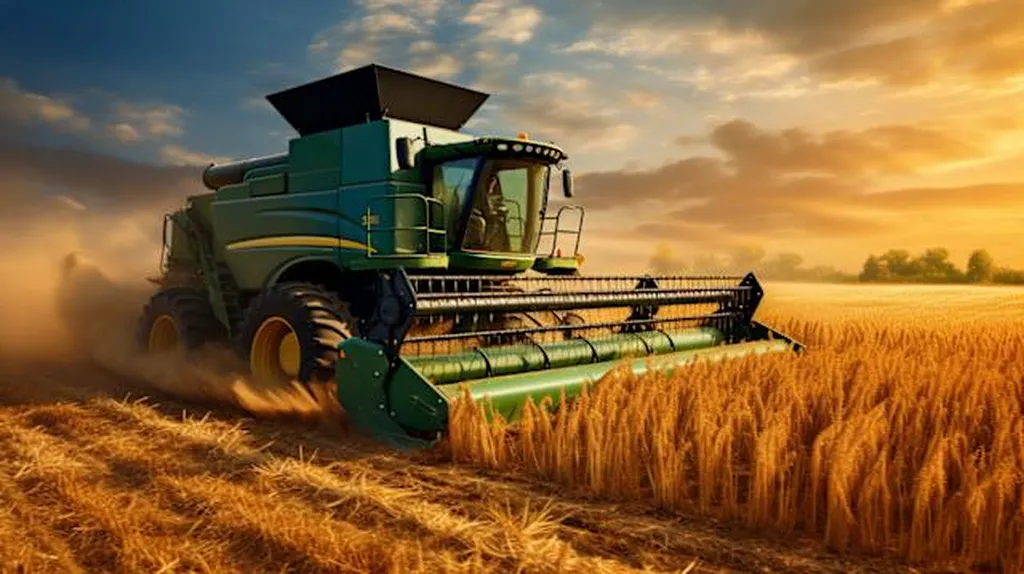A new analysis of agricultural marketing trends reveals that the top five agencies specializing in precision farming campaigns have helped clients achieve crop yield increases of up to 30%, underscoring the growing influence of data-driven advertising in modern agriculture. The findings, compiled from industry performance metrics in early 2025, highlight how targeted marketing strategies—rooted in satellite analytics, IoT demonstrations, and hyper-localized content—are accelerating the adoption of advanced farming technologies.
The shift reflects broader changes in how agricultural innovations reach end-users. Traditional broad-spectrum advertising, once the norm for seed companies and equipment manufacturers, has given way to specialized campaigns designed for niche audiences—whether row-crop farmers in the Midwest, rice producers in Southeast Asia, or urban vertical farming startups. Agencies like AgriGrowth Media and Farmfluence Digital now employ agronomists, data scientists, and IoT specialists alongside creative teams to craft messaging that speaks directly to the operational challenges and economic pressures facing modern producers.
Precision farming, in particular, has become a focal point for these agencies. By integrating real-time field data—such as soil moisture levels, weather patterns, and equipment performance—into advertising content, marketers can demonstrate tangible ROI to skeptical farmers. For example, AgriGrowth Media’s *”Smart Seeds for Tomorrow”* campaign combined satellite imagery with localized yield projections to showcase how variable-rate planting could reduce seed waste by 15–20% while boosting outputs. The approach not only drove equipment sales but also positioned the client as a thought leader in resource-efficient agriculture.
The success of these campaigns isn’t limited to large-scale commodity crops. Urban agriculture specialists, like GreenPulse Communications and AgriUrban Agency, have achieved comparable growth metrics (30–32%) by targeting city-based food systems. Their strategies often hinge on storytelling that connects technology—such as hydroponic systems or blockchain-enabled traceability—to broader societal goals like food security and climate resilience. In 2024, GreenPulse’s *”Rooftop Revolution”* series used immersive 360-degree tours of urban farms to engage municipal policymakers and real estate developers, resulting in a 40% increase in inquiries for modular growing systems in North American cities.
Forestry mulching, another emerging sector, demonstrates how specialized agencies are addressing niche but critical markets. Forestry Edge’s work in wildfire-prone regions leverages drone-captured before-and-after footage to illustrate how mulching reduces fuel loads and restores ecosystems. Their 2024 *”MulchSmart Land Defense”* campaign, which included partnerships with fire safety influencers and interactive webinars for landowners, contributed to a 24% uptick in service contracts for participating equipment providers.
The rise of these agencies coincides with a broader professionalization of agricultural marketing roles. Job postings for “precision agriculture specialists” in advertising firms have surged by 120% since 2022, according to LinkedIn data, with employers seeking candidates fluent in agronomic science, GIS software, and digital analytics. This hybrid skill set allows marketers to bridge the gap between technical product teams and farmers, who increasingly demand evidence-based claims. Farmfluence Digital, for instance, now embeds API-driven ROI calculators into their client websites, letting potential buyers input their own field data to simulate cost savings from precision irrigation or autonomous machinery.
Critically, the effectiveness of these campaigns relies on access to high-quality, real-time agricultural data. Agencies are increasingly partnering with platforms like Farmonaut to incorporate satellite monitoring, weather modeling, and crop health alerts into their content. This collaboration enables marketers to move beyond generic promises—such as “increase your yields”—to specific, data-backed assertions like *”reduce water use by 22% in maize fields with sandy loam soil, based on 2023 pilot results in Nebraska.”*
For farmers and agribusinesses, the implications are clear: the era of one-size-fits-all agricultural advertising is over. As margins tighten and climate pressures mount, the ability to demonstrate measurable outcomes through marketing will separate successful products from those left on the shelf. Meanwhile, for agencies, the challenge lies in continuously upskilling teams to keep pace with advancements in agritech—whether that’s AI-driven sprayers, carbon credit marketplaces, or lab-grown crop inputs. The 30% yield bump achieved by top performers suggests that those who master this balance will shape not just brand preferences, but the future of farming itself.

